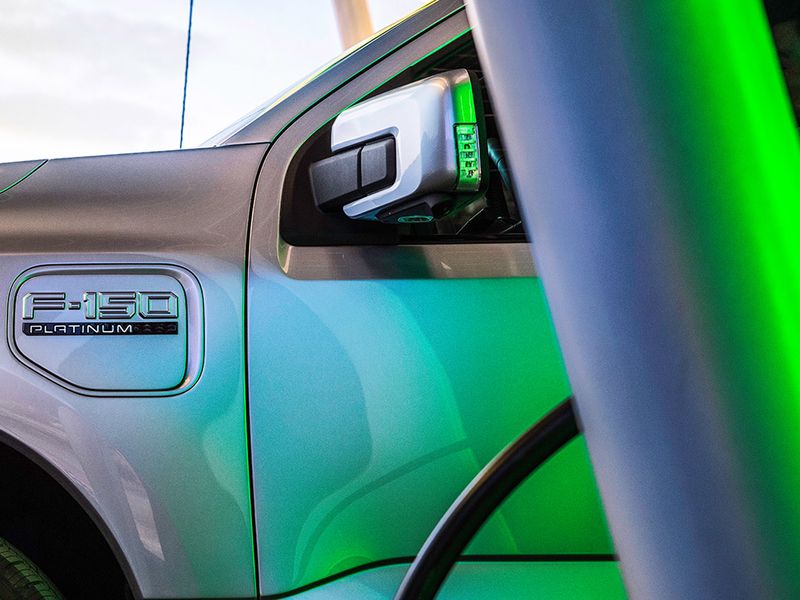
DETROIT — Ford Motor Co. said Thursday that it will spend an additional $250 million and add 450 new jobs in southeast Michigan to double production of its upcoming F-150 Lightning EV pickup.
Ford said the investment and jobs will be spread across its Rouge Electric Vehicle Center, Van Dyke Electric Powertrain Center and Rawsonville Components Plant. The added investment will help Ford build 80,000 electric trucks per year, up from an original plan to build 40,000 annually.
Executives say they boosted the planned production based on strong demand. Ford has received more than 150,000 reservations for the electric pickup, in the form of refundable deposits, which is scheduled to go on sale by the middle of next year.
“We knew the F-150 Lightning was special, but the interest from the public has surpassed our highest expectations and changed the conversation around electric vehicles. So we are doubling down, adding jobs and investment to increase production,” Executive Chair Bill Ford said in a statement. “This truck and the Ford-UAW workers who are assembling it in Michigan have a chance to make history and lead the electric vehicle movement in America.”
The automaker on Thursday hosted Michigan Gov. Gretchen Whitmer and U.S. Rep. Debbie Dingell on a tour of its Rouge Electric Vehicle Center, which has begun building preproduction Lightnings. The company broke ground on the site last year, announcing an initial $700 million investment that would create 300 jobs.
The 500,000 square-foot site is unique among Ford plants in that it doesn’t feature fixed assembly lines. Instead, yellow automated robots carry pieces of vehicles from one part of the plant to another. Part of the vehicles are assembled in the same area where Ford builds the gas-powered F-150s, but come to the Rouge EV Center after they’ve gone through the shared paint shop.
Once inside the center, the vehicles are outfitted with batteries and other key components. Plant officials say it takes a couple hours for the vehicle to wind its way through the plant before it’s finished, charged and sent out for delivery. The current preproduction models coming out of the plant are undergoing durability testing, officials said.
“Today’s announcement is a great example of the right way to navigate the transition to tomorrow’s vehicles by ensuring good-paying jobs of the future — investing in building vehicles in the United States, with the hardworking men and women of the UAW,” Laura Dickerson, UAW Region 1A director, said in a statement. “Investments like this can pave the way to a future that protects our families, our communities and our middle class. Ford is doing this the right way with the F-150 Lightning — creating 450 additional UAW-represented jobs. Ford is investing in this all-electric F-150 Lightning, as well as hybrid and gas F-150 versions, as consumer demands shift. It’s not a one-size-fits-all approach.”
Kumar Galhotra, Ford’s president of the Americas and International Markets Group, told reporters Thursday that the automaker wouldn’t hit its 80,000 production capacity limit until 2023.
He said the company didn’t have a prediction for how many reservation holders would convert to actual sales, although he said he “expected it to be in the similar neighborhood” as the roughly 65 percent reservation-to-sales conversion rate seen for the Bronco SUV.

